How to Build a Wallet for Blockchain Developers
In the rapidly evolving world of blockchain technology, the demand for secure and efficient digital wallets has never been higher. As a blockchain developer, creating a wallet isn't just about coding; it's about understanding the intricacies of the blockchain ecosystem and the needs of users. A well-designed wallet can be the gateway for users to interact with various blockchain networks, making it essential to pay attention to both functionality and security.
When embarking on the journey to build a blockchain wallet, it's crucial to start with a clear understanding of what blockchain wallets are and their significance in the digital landscape. Blockchain wallets serve as the bridge between users and their digital assets, allowing them to send, receive, and manage cryptocurrencies and tokens. But not all wallets are created equal. There are different types of wallets, such as hot wallets, cold wallets, and hardware wallets, each serving a unique purpose and catering to different user needs.
As you dive deeper into wallet development, consider the essential features that will set your wallet apart. Features like multi-currency support, transaction history, and seamless integration with decentralized applications (dApps) are vital. Users today are looking for wallets that not only store their assets securely but also provide a streamlined experience when interacting with various blockchain services.
Security is another cornerstone of wallet development. With the rise of cyber threats, ensuring the safety of user assets must be a top priority. Implementing robust encryption, utilizing two-factor authentication, and adhering to secure coding practices can significantly minimize the risks associated with wallet vulnerabilities. Remember, a single security flaw can lead to catastrophic losses for users, damaging your reputation as a developer.
Moreover, the design of the user interface (UI) and user experience (UX) plays a critical role in the success of your wallet. A well-crafted UI can make complex blockchain interactions feel intuitive, even for novice users. Think of your wallet as a digital storefront; if the layout is confusing or cluttered, users may abandon it for a competitor. Strive for simplicity and clarity, ensuring that every feature is easily accessible.
Integrating your wallet with various blockchain networks is another important aspect. Each blockchain has its own set of protocols, and ensuring compatibility can be challenging. You’ll need to account for transaction processing speeds, fees, and network security. This requires a deep understanding of the blockchain you’re working with, as well as the ability to adapt your wallet to meet these unique requirements.
Testing and quality assurance are non-negotiable in wallet development. Rigorous testing methodologies should be employed to ensure that every feature functions as intended and that the wallet is secure from potential threats. This involves both automated testing and manual testing to catch any bugs or issues that could hinder user experience.
Finally, compliance with regulations cannot be overlooked. Understanding the legal landscape surrounding blockchain wallets is essential, especially regarding KYC (Know Your Customer) and AML (Anti-Money Laundering) protocols. Navigating these regulations can be complex, but ensuring compliance will not only protect your users but also enhance your credibility as a developer.
As we look to the future, it's exciting to consider the trends shaping wallet development. The rise of decentralized finance (DeFi) and the integration of non-fungible tokens (NFTs) are two significant trends that are redefining how wallets function. Being ahead of the curve in these areas can position your wallet as a leader in the market.
- What is a blockchain wallet? A blockchain wallet is a digital tool that allows users to store and manage their cryptocurrencies and tokens securely.
- How do I ensure my wallet is secure? Implement strong encryption, utilize two-factor authentication, and follow secure coding practices to protect user assets.
- What features should I include in my wallet? Essential features include multi-currency support, transaction history, and integration with dApps.
- Why is user experience important? A good user experience ensures that users can easily navigate your wallet, making it more likely they will use it regularly.
- How can I stay compliant with regulations? Stay informed about KYC and AML requirements and ensure your wallet adheres to these regulations.

Understanding Blockchain Wallets
In the ever-evolving world of blockchain technology, understanding blockchain wallets is crucial for both developers and users. A blockchain wallet is essentially a digital tool that allows users to store and manage their cryptocurrencies. But what exactly does this mean? Let's break it down. At its core, a blockchain wallet doesn't actually store your cryptocurrencies like a traditional wallet holds cash. Instead, it holds the private keys that allow you to access your coins on the blockchain. Think of it as a keychain that holds the keys to your various digital assets, enabling you to unlock and manage them as you see fit.
There are several types of blockchain wallets, each with its own functionalities and features. The main categories include:
- Hot Wallets: These are connected to the internet and are typically more user-friendly, making them ideal for everyday transactions.
- Cold Wallets: These are offline wallets that provide enhanced security, making them perfect for long-term storage of assets.
- Hardware Wallets: A type of cold wallet that stores your private keys on a physical device, offering a robust layer of security.
- Software Wallets: These can be desktop or mobile applications that provide easy access to your funds.
Each type of wallet serves a specific purpose, catering to the varying needs of users. For instance, while a hot wallet is great for frequent transactions, a cold wallet is better suited for those who want to keep their assets safe from potential online threats. The choice of wallet often comes down to a balance between convenience and security.
Moreover, the design of a wallet plays a significant role in the overall blockchain ecosystem. A well-designed wallet not only enhances the user experience but also encourages adoption among new users. It's essential for developers to keep in mind that the wallet should be intuitive, making it easy for users to navigate through their assets, view transaction histories, and execute trades.
In summary, understanding blockchain wallets is more than just knowing how they work; it's about recognizing their importance in the larger blockchain landscape. As developers, creating a wallet that is both functional and user-friendly can significantly impact the way users interact with cryptocurrencies. The future of blockchain technology hinges on these digital wallets, making it imperative for developers to innovate and enhance their features continuously.
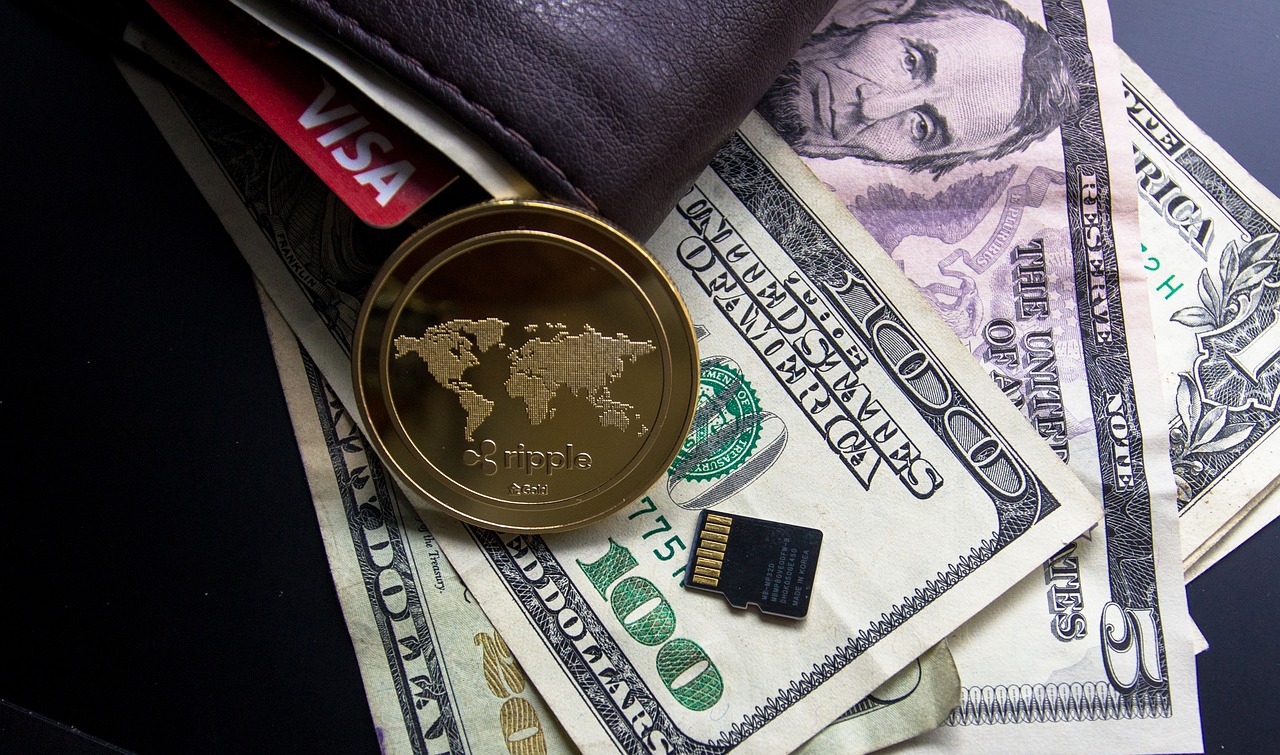
Key Features of a Developer Wallet
When it comes to building a digital wallet specifically designed for blockchain developers, certain features are non-negotiable. Think of a developer wallet as a Swiss Army knife; it needs to be versatile, robust, and user-friendly. First and foremost, multi-currency support is essential. Developers often work across various blockchain platforms, and a wallet that accommodates multiple cryptocurrencies allows for seamless transactions and testing across different networks. Imagine trying to juggle multiple wallets for different currencies—it's not only cumbersome but also inefficient. Instead, a single wallet that supports multiple currencies simplifies the process immensely.
Another key feature is the ability to track transaction history. Developers need to have a clear view of their past transactions to debug issues, analyze performance, and ensure everything is functioning as it should. A wallet that offers a comprehensive transaction history, complete with timestamps, amounts, and status, provides invaluable insights that can help developers optimize their applications. Without this feature, it’s like trying to navigate a maze without a map—frustrating and time-consuming.
Moreover, integration capabilities with decentralized applications (dApps) cannot be overlooked. A wallet that allows for easy integration with dApps opens up a world of possibilities for developers. They can create, test, and deploy applications without the hassle of switching between different platforms. This integration not only saves time but also enhances productivity, allowing developers to focus on what they do best—building innovative solutions.
Security features are paramount in any digital wallet, especially one aimed at developers. Features such as encryption and two-factor authentication (2FA) are crucial for protecting sensitive information and assets. Developers handle significant amounts of cryptocurrency, and a breach could lead to devastating losses. Incorporating strong security measures is akin to putting a sturdy lock on your front door; it may not be foolproof, but it significantly reduces the risk of unauthorized access.
Another essential aspect is the wallet's user interface (UI). A clean and intuitive UI is vital for both novice and experienced users. If a wallet is difficult to navigate, it can lead to frustration and errors. Developers should prioritize a design that is not only visually appealing but also functional. Just like a well-designed website, a user-friendly wallet can make all the difference in user satisfaction and retention.
Lastly, consider the importance of real-time updates. In the fast-paced world of blockchain, having a wallet that provides real-time information about transactions and network status is invaluable. It allows developers to make quick decisions and adjustments, ultimately leading to a smoother development process. Think of it as having a dashboard in your car that gives you instant feedback on your speed, fuel levels, and engine status—essential for navigating the road ahead.
In summary, a developer wallet should not only be a secure storage solution but also a comprehensive tool that enhances the development experience. By incorporating features like multi-currency support, transaction history, dApp integration, robust security, user-friendly design, and real-time updates, developers can create a wallet that truly meets the needs of its users.
- What is a developer wallet? A developer wallet is a digital wallet specifically designed to meet the needs of blockchain developers, providing features that facilitate development and testing across various blockchain platforms.
- Why is multi-currency support important? Multi-currency support allows developers to manage multiple cryptocurrencies from a single wallet, simplifying transactions and improving efficiency.
- How does security play a role in wallet development? Security features like encryption and two-factor authentication are critical for protecting sensitive information and preventing unauthorized access to assets.

Security Measures for Wallet Development
When it comes to developing a blockchain wallet, security should be your top priority. Why? Because a wallet is the gateway to a user's digital assets, and any breach could lead to devastating losses. Imagine leaving your front door unlocked; it’s the same risk when you neglect security measures for your wallet. Therefore, understanding and implementing robust security protocols is essential for both developers and users.
One of the fundamental security measures is encryption. This process transforms data into a format that is unreadable without the proper decryption key. By using strong encryption algorithms, you can ensure that sensitive user information, such as private keys and passwords, is safeguarded against unauthorized access. Think of encryption as a secret code that only the wallet owner can decipher, keeping their assets safe from prying eyes.
Another critical component is two-factor authentication (2FA). This adds an extra layer of security by requiring users to provide two forms of identification before accessing their wallets. Typically, this involves something they know (like a password) and something they have (like a mobile device for receiving a verification code). It’s like having two locks on your front door—one is not enough, and the second one keeps you even safer.
Moreover, developers must adopt secure coding practices to protect against common vulnerabilities, such as SQL injection and cross-site scripting (XSS). Utilizing frameworks and libraries that are regularly updated and well-maintained can significantly reduce the risk of security flaws. Just like you wouldn’t use outdated antivirus software, you shouldn’t rely on old coding practices when building your wallet.
Additionally, implementing multi-signature wallets can enhance security. These wallets require multiple private keys to authorize a transaction, which means that even if one key is compromised, the assets remain safe. It’s similar to having a safe deposit box that requires multiple people to access it—collaboration in security is key.
Regular security audits are also vital. Conducting thorough audits helps identify potential vulnerabilities in your wallet's code and infrastructure. This proactive approach can prevent future exploits. Think of it as routine check-ups for your digital wallet; it keeps everything running smoothly and securely.
Lastly, educating users about best practices is essential. A wallet can be as secure as Fort Knox, but if users fall for phishing scams or use weak passwords, their assets are still at risk. Providing guidelines on creating strong passwords and recognizing suspicious activities can empower users to take charge of their own security.
In summary, ensuring the security of a blockchain wallet involves a multi-faceted approach that includes encryption, two-factor authentication, secure coding practices, multi-signature functionality, regular audits, and user education. By focusing on these areas, developers can create a wallet that not only protects users' assets but also builds trust within the blockchain community.
- What is the most important security feature for a blockchain wallet? Encryption is critical as it protects sensitive data from unauthorized access.
- How does two-factor authentication enhance wallet security? It requires two forms of identification, making it harder for unauthorized users to gain access.
- What are multi-signature wallets? These wallets require multiple private keys to authorize transactions, adding an extra layer of security.
- Why are security audits necessary? They help identify vulnerabilities in the wallet's code and infrastructure, preventing potential exploits.

User Experience and Interface Design
When it comes to developing a blockchain wallet, one of the most crucial aspects to consider is user experience (UX) and user interface (UI) design. Imagine walking into a store where everything is cluttered and hard to find; you’d probably turn around and leave, right? The same principle applies to digital wallets. A well-designed wallet not only attracts users but also keeps them engaged. It should be as intuitive as flipping a light switch—easy to use, with no complicated instructions required.
First and foremost, intuitive navigation is key. Users should be able to find what they need without feeling lost in a maze of options. Think of it like a map that guides you to your destination without any detours. Incorporating clear labels, recognizable icons, and a logical flow can significantly enhance the user experience. For instance, if a user wants to send funds, the option should be front and center, easily accessible without unnecessary clicks.
Moreover, the aesthetic appeal of a wallet cannot be overlooked. A visually pleasing design can make users feel more comfortable and secure. Colors, fonts, and layouts should not only align with the brand identity but also promote ease of use. A good design is like a well-tailored suit—it fits perfectly and makes a great impression. Using a consistent color palette and typography can create a cohesive look that resonates with users.
Accessibility is another critical component of UX/UI design. A wallet should cater to a wide range of users, including those who may not be tech-savvy. This means implementing features like screen reader compatibility and ensuring that the text is legible for users with visual impairments. Just as a well-designed building has ramps and elevators for accessibility, a wallet must be designed to accommodate all users.
Additionally, incorporating feedback mechanisms can greatly enhance user satisfaction. For example, when a transaction is successful, a simple notification or visual cue can reassure users that their action has been completed. This feedback loop helps build trust and confidence in the wallet’s functionality. Imagine sending a message and receiving a prompt response; it feels good, right? The same goes for wallet interactions.
Finally, it’s essential to conduct user testing during the design process. Gathering feedback from real users can provide invaluable insights into what works and what doesn’t. A wallet that has undergone rigorous testing is like a well-oiled machine—it runs smoothly and efficiently. By iterating on user feedback, developers can refine the design to better meet the needs of their audience.
In conclusion, the importance of UX and UI design in blockchain wallet development cannot be overstated. A wallet that prioritizes user experience will not only attract users but also retain them. By focusing on intuitive navigation, aesthetic appeal, accessibility, feedback mechanisms, and user testing, developers can create a wallet that stands out in a crowded market. After all, in the world of blockchain, the user should always come first.
- What is the importance of UX/UI design in blockchain wallets?
UX/UI design is crucial as it determines how easily users can navigate and interact with the wallet, impacting user satisfaction and retention. - How can I ensure my wallet is accessible to all users?
Incorporate features like screen reader compatibility and ensure legibility for users with visual impairments. - What role does user feedback play in wallet development?
User feedback helps identify pain points and areas for improvement, leading to a more user-friendly product.
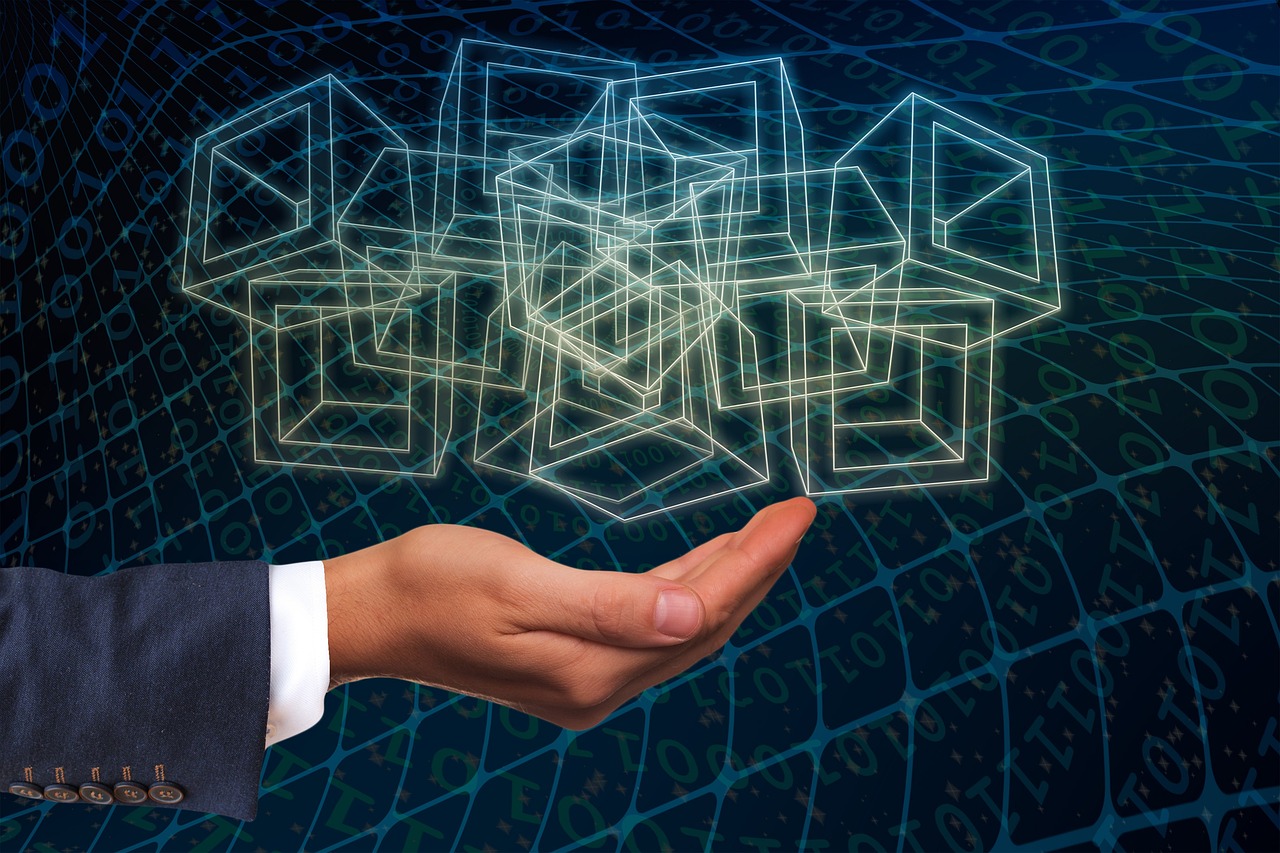
Integrating with Blockchain Networks
Integrating a digital wallet with various blockchain networks is like building a bridge between two worlds—your wallet and the vast, decentralized universe of blockchain technology. This integration is crucial for ensuring that users can seamlessly interact with multiple cryptocurrencies and decentralized applications (dApps). But how do you go about it? Well, let’s dive into some key considerations that every blockchain developer should keep in mind when integrating their wallets.
First and foremost, compatibility is king. A wallet must support multiple blockchain protocols to cater to a diverse user base. Think of it as a universal remote control that can operate various devices. If your wallet only works with Bitcoin, you’re missing out on the vibrant ecosystems of Ethereum, Solana, and others. Therefore, it’s essential to choose the right libraries and frameworks that facilitate communication with different blockchain networks. Popular options include Web3.js for Ethereum and Solana Web3.js for Solana, which allow developers to interact with smart contracts and manage transactions effortlessly.
Next, let’s talk about transaction processing. Integrating a wallet with blockchain networks means you need to handle transactions efficiently. This involves not just sending and receiving tokens but also monitoring transaction statuses and managing gas fees. Imagine trying to send a letter but constantly having to check if it’s been delivered—frustrating, right? To avoid this, implementing a robust transaction tracking system is essential. You can provide users with real-time updates on their transaction statuses, enhancing their overall experience.
Another critical aspect is security. When integrating with blockchain networks, the wallet must ensure that all transactions are secure and that user assets are protected. This means utilizing secure coding practices, implementing encryption, and possibly even integrating hardware wallet support for added security. Just like a bank vault protects your money, your wallet should have multiple layers of security to safeguard against potential threats.
Moreover, developers should consider the user experience. A wallet that integrates with multiple networks should not overwhelm users with complex features. Instead, it should present a clean and intuitive interface that allows easy navigation. Users should be able to switch between networks effortlessly, much like flipping through channels on a TV. A well-designed user interface can significantly enhance user satisfaction and retention.
Finally, it’s essential to stay updated with the latest developments in blockchain technology. The landscape is ever-evolving, and new protocols and networks are frequently emerging. Keeping abreast of these changes ensures that your wallet remains relevant and functional. Regular updates and community engagement can help you adapt and innovate, ensuring your wallet continues to meet users' needs.
In conclusion, integrating a wallet with various blockchain networks is a multifaceted process that involves compatibility, transaction processing, security, user experience, and ongoing innovation. By addressing these aspects, developers can create a wallet that not only meets the demands of today’s users but also paves the way for future advancements in the blockchain space.
- What is the best way to ensure compatibility with multiple blockchains?
Using widely accepted libraries and frameworks can help developers create wallets that support various blockchain protocols. - How can I improve transaction processing speeds?
Implementing efficient algorithms and monitoring network conditions can enhance transaction processing times. - What security measures should I implement?
Utilizing encryption, two-factor authentication, and secure coding practices are essential for protecting user assets. - How important is user experience in wallet development?
A seamless user experience can significantly impact user retention and satisfaction, making it a critical factor in wallet design.
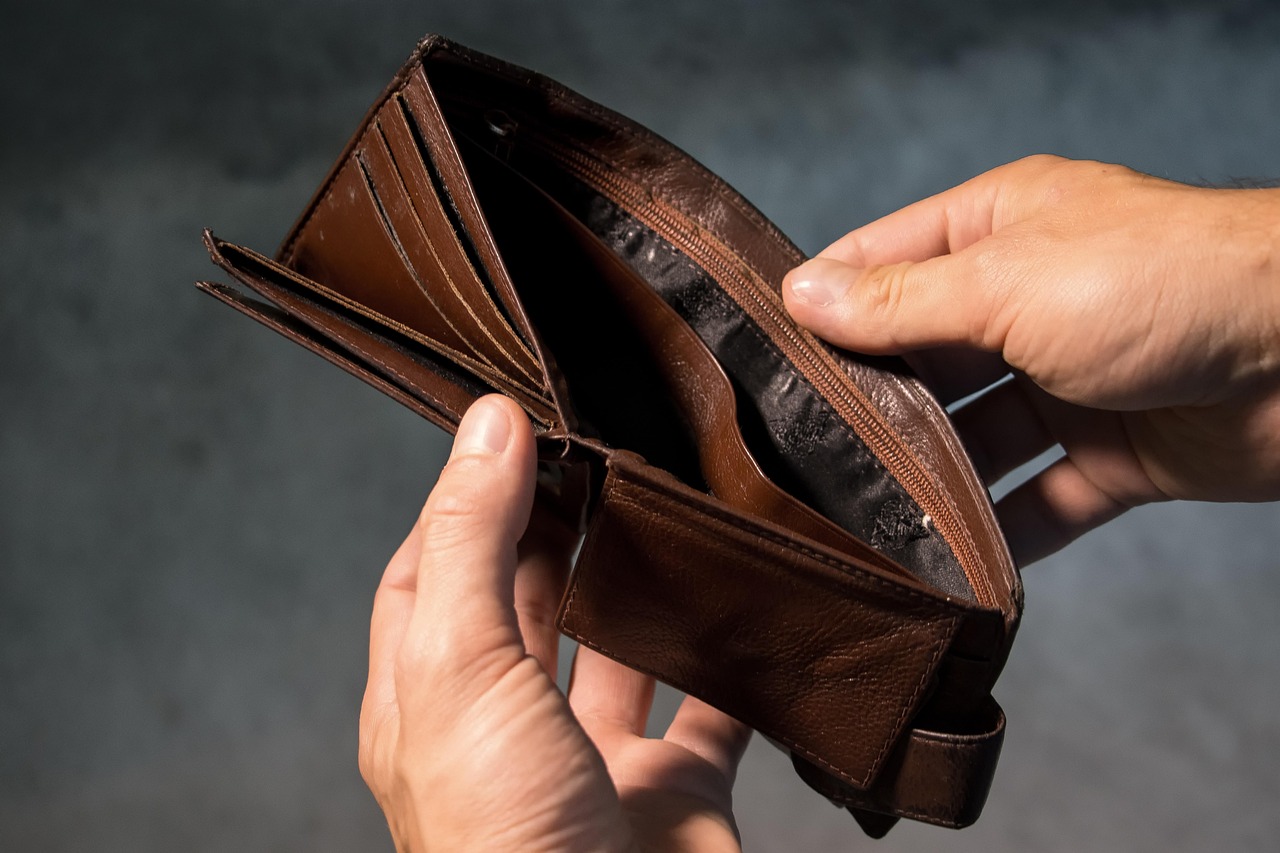
Testing and Quality Assurance
When it comes to developing a blockchain wallet, are not just afterthoughts; they are essential components of the development process. Think of your wallet as a digital vault where users store their valuable assets. Just like you wouldn't want a physical vault to be easily breakable or unreliable, your digital wallet must undergo rigorous testing to ensure it is secure, functional, and user-friendly. So, how do you ensure that your wallet meets these high standards?
First, it’s crucial to implement a variety of testing methodologies. Each testing phase serves a unique purpose and helps identify different types of issues. Here’s a quick rundown of some common testing types:
- Unit Testing: This involves testing individual components of the wallet to ensure they perform as expected in isolation.
- Integration Testing: After unit testing, it’s important to check how different components work together. Integration testing helps to identify issues that may arise when various parts of the system interact.
- Functional Testing: This type of testing assesses whether the wallet meets the specified requirements. It focuses on user interactions and ensures that all features function correctly.
- Security Testing: Given the sensitive nature of blockchain transactions, security testing is paramount. This includes penetration testing to identify vulnerabilities and ensure that user data is protected.
- User Acceptance Testing (UAT): Finally, it’s crucial to involve real users in the testing process. UAT helps to gather feedback on the wallet’s usability and functionality from the end user’s perspective.
Now, let’s talk about the importance of automated testing. In the fast-paced world of blockchain, where updates and changes happen frequently, automated testing can save time and reduce human error. Automation allows developers to run a suite of tests quickly and efficiently, ensuring that new features or updates do not break existing functionality. Additionally, automated tests can be run continuously, providing ongoing assurance that the wallet remains secure and functional over time.
Another critical aspect of quality assurance is maintaining a feedback loop. After launching the wallet, it’s vital to gather user feedback and monitor performance metrics. This data can reveal areas for improvement and help developers understand how users interact with the wallet. Regular updates based on this feedback not only enhance the wallet's functionality but also foster trust and loyalty among users.
Moreover, implementing a robust bug tracking system can streamline the quality assurance process. This system allows developers to log, prioritize, and resolve issues efficiently. By categorizing bugs based on severity and impact, teams can focus on critical issues that affect user experience and security first. A well-maintained bug tracking system can significantly reduce the time taken to identify and fix problems, ensuring a smoother user experience.
In conclusion, testing and quality assurance are indispensable in the development of a blockchain wallet. By employing a combination of testing methodologies, leveraging automation, maintaining a feedback loop, and utilizing a bug tracking system, developers can create a wallet that not only meets but exceeds user expectations. This dedication to quality will ultimately lead to a more secure and reliable product, enhancing user trust and satisfaction.
Q1: Why is testing important for a blockchain wallet?
A1: Testing is crucial because it ensures that the wallet is secure, functional, and user-friendly. It helps identify and fix issues before the wallet is released to the public.
Q2: What types of testing should be conducted?
A2: Key types of testing include unit testing, integration testing, functional testing, security testing, and user acceptance testing (UAT).
Q3: How can automation improve the testing process?
A3: Automation allows for quicker and more efficient testing, reducing human error and enabling continuous testing, which is essential for maintaining software quality in a fast-paced environment.
Q4: What is a bug tracking system?
A4: A bug tracking system is a tool that helps developers log, prioritize, and resolve issues efficiently, ensuring that critical problems are addressed promptly.
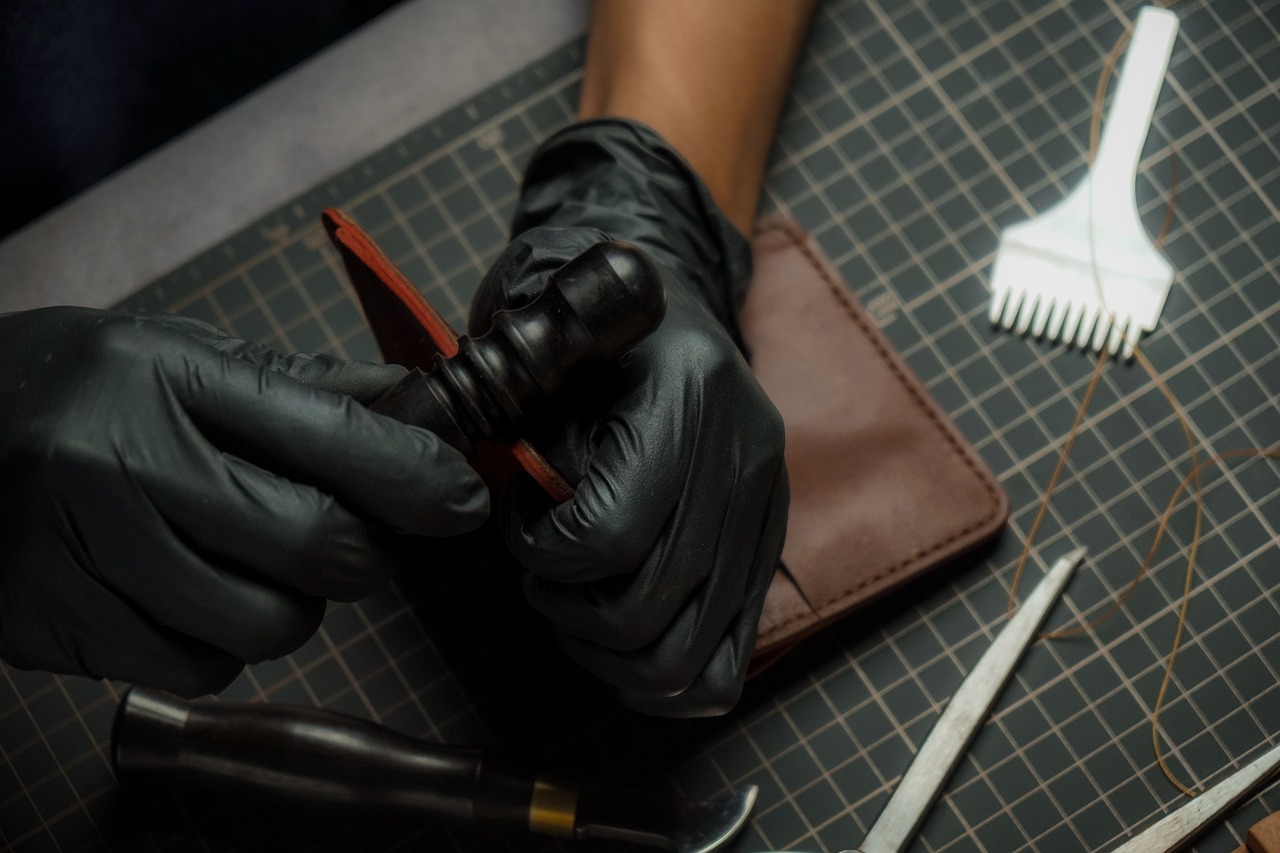
Compliance and Regulations
When diving into the world of blockchain wallets, are not just buzzwords; they are the backbone of a trustworthy and secure digital financial ecosystem. With the rapid evolution of blockchain technology, regulatory frameworks are constantly being updated to address the unique challenges posed by cryptocurrencies and digital assets. For developers, understanding these regulations is crucial to ensure that their wallets not only function effectively but also adhere to the legal standards set forth by various governing bodies.
One of the primary regulations that developers must consider is Know Your Customer (KYC). This process requires wallet providers to verify the identity of their users to prevent fraud and ensure that their services are not being used for illicit activities. Implementing KYC can be a daunting task for developers, but it is essential for building trust and credibility within the user base. KYC processes typically involve:
- Collecting user identification documents, such as passports or driver's licenses.
- Verifying the authenticity of these documents through reliable third-party services.
- Maintaining a secure database of user information to comply with privacy laws.
Another critical aspect is Anti-Money Laundering (AML) regulations. These laws are designed to prevent the use of financial systems for money laundering and other illegal activities. Developers must implement mechanisms to monitor transactions and report any suspicious activities to the relevant authorities. This can include setting transaction limits, conducting regular audits, and employing sophisticated algorithms to detect unusual patterns.
It's also important to consider the geographical diversity of regulations. Different countries have varying laws regarding cryptocurrencies, and what is acceptable in one jurisdiction may be illegal in another. As a blockchain wallet developer, you should be aware of the regulations in the regions where you plan to operate. This knowledge will help you avoid legal pitfalls and ensure compliance. Below is a simplified overview of some key regulations by region:
| Region | KYC Requirements | AML Compliance |
|---|---|---|
| United States | Mandatory | Strict |
| European Union | Mandatory | Strict |
| Asia | Varies by country | Varies by country |
Furthermore, developers should also keep an eye on data protection laws, such as the General Data Protection Regulation (GDPR) in the EU, which governs how personal data should be handled. Non-compliance can lead to hefty fines and damage to your brand's reputation. Thus, ensuring that your wallet complies with such regulations is not just about avoiding penalties; it's about fostering user trust and loyalty.
In conclusion, the landscape of compliance and regulations in blockchain wallet development is intricate and ever-changing. Developers must stay informed and agile, adapting their practices to meet the current legal standards. By prioritizing compliance, you not only protect your users but also pave the way for a more secure and reputable digital wallet that stands the test of time.
Q: What are KYC and AML?
A: KYC (Know Your Customer) refers to the process of verifying the identity of your clients, while AML (Anti-Money Laundering) focuses on preventing illegal activities involving money.
Q: Why is compliance important for blockchain wallets?
A: Compliance is crucial for building trust with users, avoiding legal issues, and ensuring the security of the wallet against fraud and other illicit activities.
Q: How can I ensure my wallet complies with regulations?
A: Stay updated on regulatory changes, implement robust KYC and AML processes, and consult with legal experts in the field of blockchain technology.
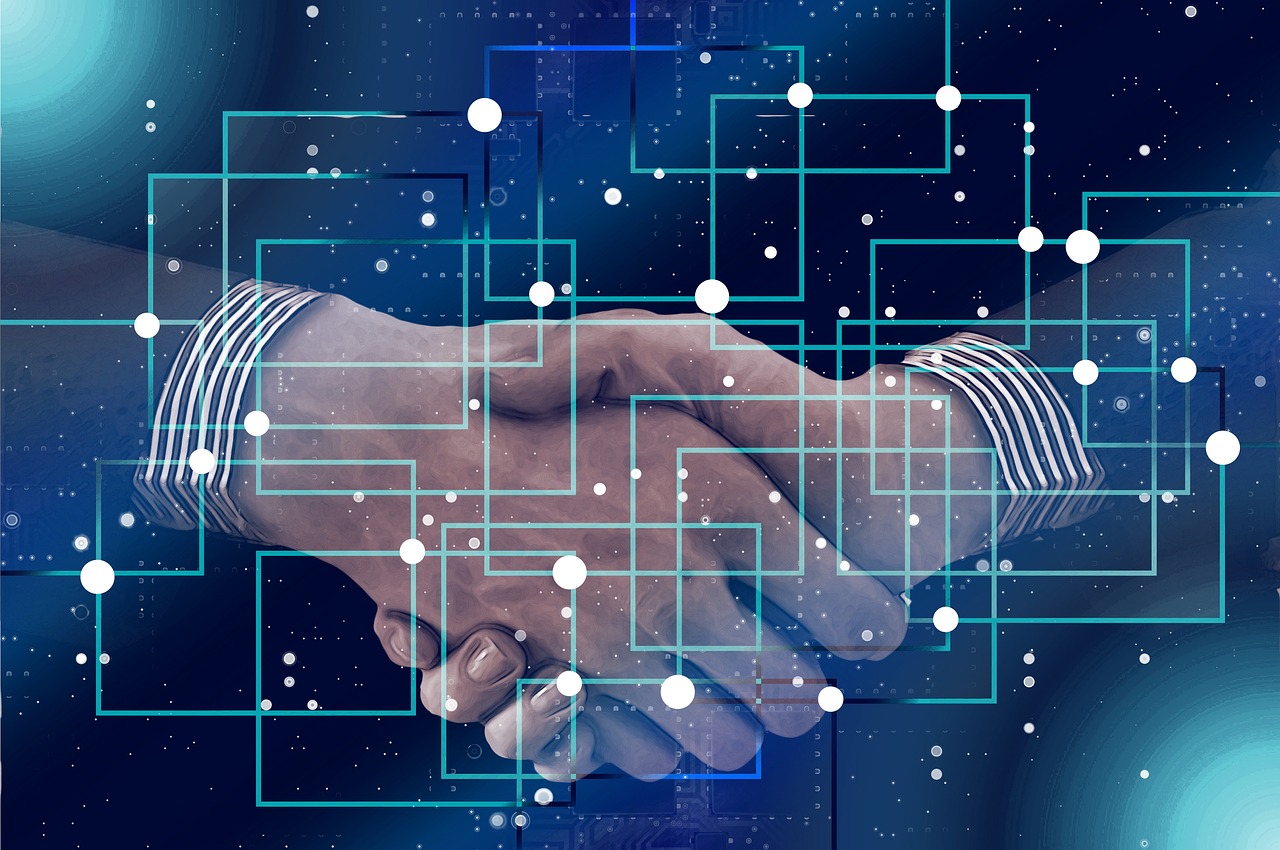
Future Trends in Wallet Development
The world of blockchain technology is evolving at a breakneck pace, and with it, the development of digital wallets is also undergoing significant transformations. As we look to the future, several trends are emerging that are poised to reshape how wallets function and the features they offer. One of the most exciting trends is the increasing integration of Decentralized Finance (DeFi). DeFi platforms allow users to engage in financial transactions without intermediaries, and wallets that can seamlessly connect to these platforms will be in high demand. Imagine a wallet that not only stores your cryptocurrencies but also allows you to lend, borrow, and earn interest on your assets—all from one interface. This shift towards multifunctionality is crucial for attracting a broader user base.
Another significant trend is the rise of Non-Fungible Tokens (NFTs). As NFTs continue to gain popularity, wallets are being developed to support the storage, transfer, and trading of these unique digital assets. Users will want wallets that can easily showcase their NFT collections, making it easier to buy, sell, or trade them on various marketplaces. This will not only enhance user experience but also create new opportunities for developers to innovate wallet features tailored to NFT enthusiasts.
Moreover, as the demand for enhanced security measures grows, future wallets will likely incorporate advanced technologies such as biometric authentication and hardware security modules. Imagine unlocking your wallet with just a fingerprint or facial recognition—this level of security will be crucial to protect user assets from increasingly sophisticated cyber threats. Developers will need to stay ahead of the curve, ensuring that their wallets are equipped with the latest security features to build trust among users.
In addition to security, the importance of cross-chain compatibility is becoming more pronounced. As the blockchain ecosystem diversifies, users will want wallets that can support multiple blockchain networks without hassle. This means that developers will need to create wallets that can easily switch between different networks, allowing users to manage various cryptocurrencies from a single platform. To put it simply, the future of wallet development is about creating a seamless experience that transcends individual blockchain limitations.
Lastly, the growing emphasis on user experience (UX) and user interface (UI) design cannot be overlooked. As more people enter the cryptocurrency space, it is imperative that wallets are designed with both novice and experienced users in mind. This means intuitive navigation, clear instructions, and aesthetically pleasing designs that make the wallet not just functional but enjoyable to use. Developers will need to prioritize UX/UI to ensure that wallets are accessible to everyone, regardless of their technical expertise.
In summary, the future of wallet development is bright, with trends pointing towards enhanced functionality, security, and user-centric design. As blockchain technology continues to evolve, wallets will play a pivotal role in shaping the user experience and driving the adoption of cryptocurrencies and digital assets. Developers who embrace these trends will not only meet the needs of current users but also attract a new wave of enthusiasts eager to explore the world of blockchain.
- What are the key features to look for in a blockchain wallet?
Key features include multi-currency support, transaction history, security measures like two-factor authentication, and seamless integration with decentralized applications.
- How can I ensure the security of my digital wallet?
Implement strong passwords, enable two-factor authentication, and keep your software updated to protect against vulnerabilities.
- What is the importance of user experience in wallet development?
A good user experience ensures that both novice and experienced users can navigate the wallet easily, making it more likely they will adopt and continue using it.
Frequently Asked Questions
- What is a blockchain wallet?
A blockchain wallet is a digital tool that allows users to store, send, and receive cryptocurrencies. Think of it as your online bank account for digital currencies, where you can manage your assets securely. It can be software-based (like mobile apps) or hardware-based (physical devices) and plays a crucial role in the blockchain ecosystem.
- What are the key features of a developer wallet?
A developer wallet should have several essential features, such as multi-currency support, which allows users to manage different cryptocurrencies in one place. Additionally, it should provide a transaction history to track past activities and offer integration capabilities with decentralized applications (dApps) to enhance user experience.
- How can I ensure the security of my blockchain wallet?
Security is paramount when developing a blockchain wallet. Implementing strong encryption methods, enabling two-factor authentication, and following secure coding practices are vital steps to protect user assets. Regular security audits and updates can also help in safeguarding against vulnerabilities.
- Why is user experience important in wallet development?
User experience (UX) and user interface (UI) design are crucial for wallet development because they determine how easily users can navigate and utilize the wallet. A well-designed wallet should be intuitive, ensuring that both novice and experienced users can access its features without frustration.
- How do I integrate my wallet with blockchain networks?
Integrating a wallet with various blockchain networks involves ensuring compatibility with those networks' protocols and standards. This includes understanding transaction processing methods and how to handle different types of tokens, which can be complex but is essential for a seamless user experience.
- What testing methods should I use for my wallet?
Testing methodologies for a blockchain wallet should include unit testing, integration testing, and user acceptance testing. These processes help ensure that the wallet functions correctly, is secure, and provides a smooth experience for users. It's like putting your wallet through a rigorous training camp before letting it loose in the wild!
- What compliance regulations should I be aware of?
When developing a blockchain wallet, it's essential to understand compliance and regulatory requirements, such as KYC (Know Your Customer) and AML (Anti-Money Laundering) protocols. These regulations help prevent fraud and ensure that your wallet operates within the legal framework, protecting both you and your users.
- What are the future trends in wallet development?
Future trends in wallet development include the rise of decentralized finance (DeFi) and the integration of non-fungible tokens (NFTs). As these technologies evolve, wallets will need to adapt, offering new functionalities and features that cater to the changing landscape of digital assets.



















